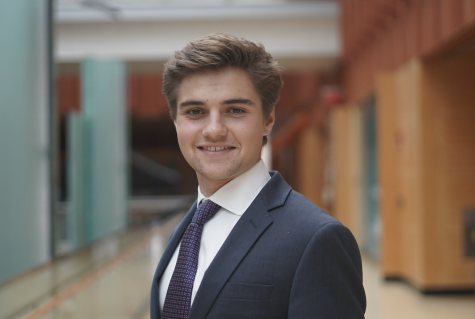S&R should better prepare students for new realities
Survey reveals need for curriculum reform
December 6, 2021
This past month many sophomores engaged in what has become an educational rite of passage at BB&N: Sex Ed. For those of us who have already taken that class, we may remember sitting in semi-circles in the community room discussing various sex related topics, like protection and STDs. Much of the data in this class was based on a 2011 survey of the upper school that asked students about their sexual lives and practices, and the sex culture within BB&N. This year, having identified that this survey was out of date, The Vanguard re-wrote and sent out another sex-ed survey that included more up to date topics, like how technology now played a role in relationships.
Among many interesting conclusions (see page X for more), one data point that stood out was the greater amount of students having unprotected sexual intercourse, in comparison to 2011’s data. About 57% of students said they had unprotected sex, which dwarfs the 29% of the 2011 survey. Though this may be shocking to some, it reveals a more disparaging fact: Sex ed, for all its ambitions, hasn’t been as affective with students as it should be.
This would make sense, however, as close to half of the students who reported taking Sex ed believed it did not prepare them for sex-related experiences. Many who took the survey detailed a lack of information, especially when related to LGTBQ intercourse and abuse in relationships. Others concluded that the information taught was the basics of heterosexual relationships and didn’t delve into handling anything else relevant to today’s changing world, like social media influence.
If you’re using 10-year-old data as the backbone of the curriculum, problems like this are bound to occur. Issues that were relevant then, like STDs, are still important, but students need additional discussions on the aforementioned topics that are important today. Discussing the same issues we learned in middle school sex ed simply won’t cut it. No wonder, then, many students who filled out the survey were bored by the information presented and didn’t see how it was applicable to their own lives.
Perhaps this isn’t all the Sex-ed program’s fault. Covid-19 made it impossible to meet in person, so much of Sex-ed in the past two years has been taught online via Powerschool. Students have been presented with limited information and not given time to discuss what’s on their minds, or have important questions answered. Either way, it’s clear the Sex ed program is in dire need of improvement to keep students engaged and informed.
This starts, of course, by incorporating topics relevant to today’s sexual relationsips, including social media and LGBTQ related. The survey taken this year, which received over 300 responses, was easy to create and distribute. Why not, then, take such a survey every year, so Sex ed teachers can use accurate data to address their students? Students taking the class would also benefit from an anonymous opportunity to opine on the specific topics they would like addressed related to their personal lives and needs.
Like it or not, sex is a taboo topic. Many feel uncomfortable discussing it among their peers, let alone an adult decades older than them. We can’t expect, either, that older people are as up to date with teenage social and sexual activity as they think they are. Bringing in younger speakers with more relevant experience, then, would benefit those discussions by allowing students to feel more comfortable, as well as connect with the Sex ed teacher on a more age-related basis. Sometimes, discussing these topics with a teacher you see every day can feel even more uncomfortable, so outsourcing a trained sex and relationships professional would release any uncomfortable tension and reluctance to participate among students.
These younger professionals would be better versed in social media and technology and more aware of the changing dynamics in relationships. Their awareness could help students address more pressing issues like how to handle sexual advances on social media, such as Nudes, and how to navigate LGBTQ and online relationships, on apps like Tinder. They would also be better prepared to discuss abuse in relationships, especially via social media like Snapchat, where most messages aren’t recorded.
All these suggestions add to a more interesting and engaging Sex ed experience. But engagement from students must also be met halfway. Students can’t use Sex ed as a time to nap; they must activly contribute as well. Since the class isn’t graded, perhaps this means having students write anonymous reflections on what they learned, or take ungraded quizzes, so teachers can have a better understanding of what people are actually learning.
In the end, the goal is to create a Sex ed class that teaches relevent material, while maintaing a safe space for engagement from students. If the school listens to what students want, and students therefore take the class seriously, that goal can definitely be reached.


